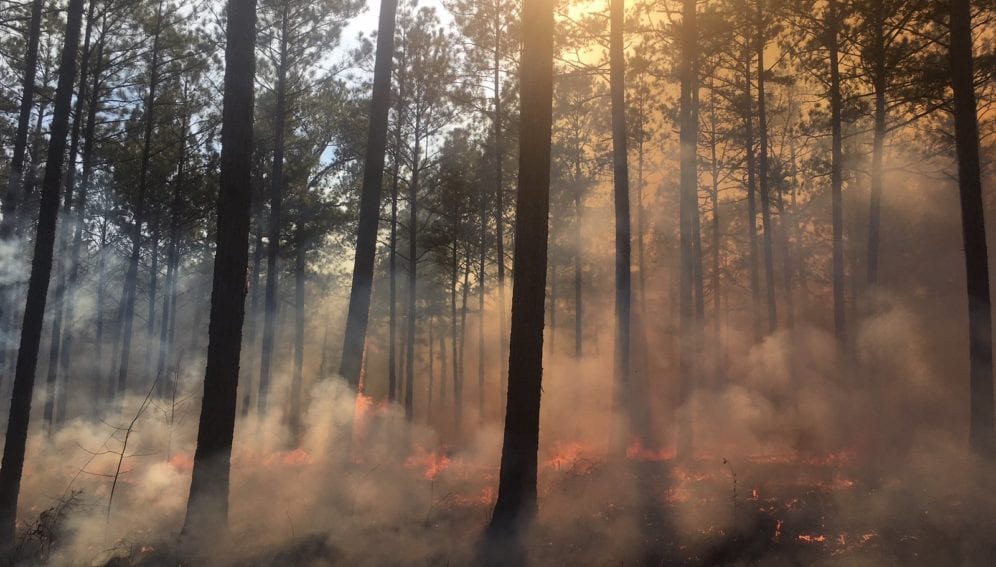10/07/19
Amazon population at risk from forest fire pollution

Send to a friend
The details you provide on this page will not be used to send unsolicited email, and will not be sold to a 3rd party. See privacy policy.
[SÃO PAULO] Populations living around Amazon areas where forests are cleared with fires to grow crops in soils fertilised by the ashes might have an increased risk of DNA damage, mutation and cancer because of the air pollution.
This was the conclusion drawn by a team of Brazilian researchers who carried out controlled fire experiments to estimate the emissions of greenhouse gases and particulate matter with a diameter of less than 2.5 microns (PM2.5) produced during burnings in rural areas around cities in Western Amazonia.
According to the Paris Agreement on climate change, Brazil should achieve zero illegal deforestation in the Amazon, as well as restore and reforest 12 million hectares, by 2030. However, in 2016, the Brazilian emissions exceeded the government’s goals by 32 per cent and the rate of deforestation in June of this year in the region reached almost 920 square kilometres.
“The high values of PM2.5 registered are quite worrisome, since this particle fraction is thought to be associated with severe health effects such as lung cancer and heart diseases,”
Simone Amaral, department of energy, São Paulo State University
This represents an increase of 88 per cent compared to the same month in 2018, according to data from the National Institute for Space Research.
Measurements taken by researchers revealed the city of Rio Branco, capital of the north-western state of Acre, registered one of the highest concentrations of PM2.5: 21.45 micrograms per cubic metre, close to the upper limit set up by WHO of 25 micrograms per cubic metre mean in 24 hours.
When fine particulate matter measuring 2.5 microns or smaller gets into the body it may penetrate the lungs and even pass into the bloodstream, causing many health problems. These tiny particles also tend to linger in the air and are able to travel thousands of kilometres downwind, producing urban plumes in surrounding cities.
Researchers also confirmed that fires drastically increase greenhouse gas emission rates in the Amazon rainforest, which trigger intense and persistent dry periods in the region, and compromise its biodiversity.
The authors say that the findings may be even more worrisome given that climate models point to a warmer and drier future in the Amazonia region, which would result in intense and persistent dry events, facilitating the spread of fires. They warn that the Amazon region would be filled with thousands of tonnes of these harmful gases.
For their experimental study, researchers selected small forest areas filled with hundreds of tree species and then felled them. Everything was done in a controlled manner. They let the vegetation dry for several months to be burned during the region’s dry season.
In the meantime, the team installed towers up to 15 metres high in the selected areas, equipped with probes and filters.
Researchers estimated pollutant concentrations in these areas before and during the fires by collecting gas samples in canisters to analyse in the laboratory.
Simone Amaral, a mechanical engineer at the São Paulo State University’s department of energy and one of the authors of the study, published in the journal Environmental Pollution, said: “The high values of PM2.5 registered are quite worrisome, since this particle fraction is thought to be associated with severe health effects such as lung cancer and heart diseases.”
She said other studies have detected the presence of compounds able to harm cellular DNA, related to the emissions of PM2.5 from biomass burning in the Amazon region, adding: “Our results reinforce the importance of further studies on PM2.5 on the dry season from deforestation fires in the Amazon region.”
In other areas, the team identified increased concentrations of methane (CH4), and propane (C3), due to the increase in carbon monoxide (CO). The concentration of carbon dioxide (CO2), emitted mainly during the flaming phase, also increased with the rise in CO concentration, associated with the smouldering phase.Luiz Augusto Machado, a meteorologist at the Brazilian Institute for Space Research’s Center for Weather Forecasting and Climate Studies, said the study was important because it quantified emissions and provided basic data for the calculation of emissions.
“This data may be used by the government in the development of public policies to control emissions and deforestation in accordance with country’s commitments under the Paris Agreement,” he told SciDev.Net.
The study published in Environmental Pollution was supported by FAPESP, a donor of SciDev.Net













